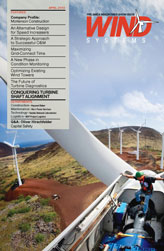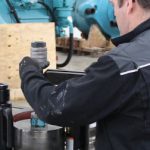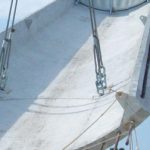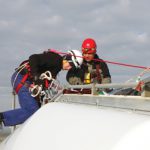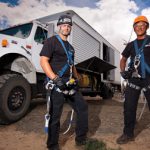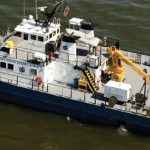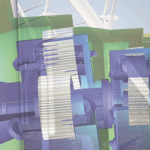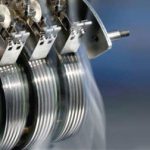It’s a fact of life that all electromechanical components will fail at some point. Having the right strategy in place to manage that failure can be the difference between success and… well, failure. This is especially true for wind turbine owners and operators. Without an effective strategy at the ready failure can be devastatingly expensive in terms of lost output, time, and most importantly, revenue.
Do you have a coherent strategy in place when failure strikes? When a problem arises, finding a fast and cost-effective solution is vital. Can the part be repaired? Does it need to be replaced? Is there inventory available? There is also a strong environmental argument in reusing existing parts instead of scrapping them and buying new.
Expanding Too Fast?
The rapid expansion of wind energy in the last 20 years has often resulted in a rush to get new technologies to market, and this has inevitably led to reliability issues. These issues can directly affect a wind farm’s revenue stream through downtime, plus there is a cost associated with additional operations and maintenance events. Some of these new technologies have a propensity for a higher failure rate within the control systems and power electronics compared with other components within the system. Approximately 54 percent of all wind turbine malfunctions are due to failures within the control electronics, electrical systems, and sensors. Unlike many of the mechanical components in a wind turbine, the majority of the electronics/electrical systems only have a single supply source—the OEM. Since the parts generally have a high unit cost, the cost of a new replacement part can be as much as three times that of repairing an existing part. In addition, gaps in the supply chain can result in exceedingly long and costly lead times.
Obstacles and Opportunities
As our industry continues to mature, many wind turbines are now coming out of their manufacturers warranty period. Numerous owners and operators throughout the United States and Europe have already experienced that some parts in their wind turbines have become obsolete, and there is no accompanying documentation to support their repair. Now if one of these parts malfunctions it is no longer just a case of replacing it, and engineers must find out how the part works and carry out detailed root cause analysis of why it failed. The complex electronics contained in today’s wind turbine assemblies requires a unique combination of skills and repair capabilities. The repair process must be carefully managed to ensure that the parts are repaired within appropriate time scales and in a cost-effective manner. This involves the use of detailed workflow and quality procedures so that each stage in the repair process is monitored and certified according to ISO standards. Fig. 1
Often the most difficult part of this repair process/recertification involves ensuring that parts are exercised to their full design specifications. The majority of electronic control parts are custom made for the wind turbine environment, therefore it is not practical or reliable to test these parts using standard off-the-shelf equipment. Nor is it practical to use a wind turbine to exercise the parts. This situation has necessitated the development of complex new software, tooling, and test jigs in order to carry out full testing and validation procedures. To replicate an often highly intelligent series of electronic interfaces and inputs/outputs signals need to be analyzed in great detail, and software and hardware emulation techniques are used to design tooling equipment capable of ensuring full test coverage on all areas of functionality of the parts. Finding a depot repair facility with expertise in this arena can be difficult, but not impossible. At DEX, for instance, we have facilities in the U.S. and Europe already in full operation. At every stage in the repair or refurbishment process it is crucial that the highest quality assurance standards are adhered to, and that a full audit trail can be provided showing the progress of the repair and certifying that the quality standards are in full compliance.
In all, a holistic engineering solution is necessary to report failure symptom trends, epidemic failures, third party module issues, and evidence of design quality and reliability problems. Understanding the “why” and “how” of component failures is paramount to prevent future disruptions in production.
Proactive Solutions
To maximize efficiency and effectiveness in this new environment, a coherent multi-faceted solution strategy must be in place before failure strikes. Specifically the need for a component repair or replacement strategy, asset management strategy, and an inventory management system need to be addressed proactively. Fig. 2
A coherent asset management strategy will mean that repairs are carried out quickly and efficiently, minimizing downtime. Once a part becomes defective it should be swapped out and sent out immediately for repair to ensure that a stock of working components are always available. Parts pooling schemes between operators can also help ensure that contingency stocks are kept high. The location, storage, and transportation of spare parts are crucial. Our research and experience has found that parts are frequently stored in warehouses close to the wind turbine site without adequate protection from the elements and are often in poor condition due to the adverse environment. In many cases the parts are unusable and need to be refurbished or repaired before they can be fitted. This can be avoided by storing parts in a central location under strictly controlled environmental conditions. Sensitive electronics are particularly vulnerable to temperature changes, humidity, and so forth, and can rapidly deteriorate if not stored properly.
Being able to track spare parts is equally important. Having an efficient asset management system with 24/7 visibility of where all parts are located and their condition—good inventory, WIP/defective—can save valuable time by identifying where spare part deficiencies may occur. DEX has developed a unique Web portal that clients can use to track and monitor their inventory providing them with real-time status of their operation. Fig. 3
Case Study
To help illustrate the necessity of having a comprehensive strategy in place I’d like to share what occurred with one of our clients. A major European wind farm operator whose turbines had come out of the warranty period had a series of rotor current controller parts failures, significantly reducing their production. With no advance strategy in place they simply turned to the OEM to purchase replacement parts. To their shock they learned that the lead time for their replacement parts was three to six months. In addition, the pricing structure from the OEM was going to significantly increase their costs. Compounding a worsening situation, with their reduced production the wind farmer was forced to purchase additional power from the grid to meet contractual obligations. Production loss on these turbines alone was in excess of five months, costing them an estimated $370,000. Not surprisingly, they began searching for alternative solutions to resolve this situation and alleviate any reoccurrences in the future. Fig. 4
With the wind farmer turning to our company, our DEX engineering team evaluated the defective parts and developed a full test and repair solution for the entire rotor current controller systems. A proprietary diagnostic software package was developed to ensure test reliability and repeatability during the product test phase. Upgrades were also carried out on the turbines, dramatically improving overall reliability. As a result the turbines were brought back online to a position of full production resolving their immediate need, and their material cost was reduced by a factor of three. A comprehensive solution has been set in place to prevent a repeat of long-term outages and disruptions in production.
In these challenging times wind turbine operators need to utilize any and all opportunities for maintaining the output of the operation at its highest capacity, cutting costs, and maximizing revenue and profits. Having a comprehensive strategy in place before failures occur is critical. Having the proper component repair or replacement strategy, asset management strategy, and an inventory management system in place can make a major contribution to achieving these goals.



















